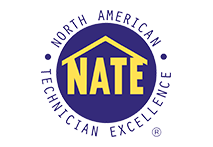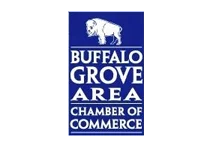Chicago winters can be harsh, and your furnace is essential in keeping your home warm. However, during the combustion process, dangerous gases such as sulfur dioxide, nitrogen dioxide, and carbon monoxide are produced. The furnace flue plays a critical role by safely venting these gases out of your home. This article will guide you through how to check your furnace flue each heating season to ensure your home remains safe.
What Is a Furnace Flue and Why Is It Important?
The furnace flue is a metal pipe that connects your furnace to a chimney or a dedicated vent pipe, allowing harmful combustion gases to exit the house. Any damage, blockages, or leaks in the flue could lead to dangerous gases entering your home, which could pose serious health risks.
Common Causes of Furnace Flue Problems in Chicago Homes
Flue problems can occur due to a variety of factors, potentially leading to gases leaking into your home. Some common causes include:
- Corrosion: Over time, moisture and acidic compounds in combustion gases can corrode the flue pipe, leading to leaks.
- Loose joints: Temperature fluctuations cause the flue to expand and contract, which may loosen joints over time, resulting in leaks.
- Flue pipe damage: Physical damage due to improper installation or accidents can restrict airflow and cause backdrafting.
- Insufficient airflow: Negative pressure caused by exhaust fans or too many fuel-burning appliances in a confined space can lead to backdrafting.
- Chimney damage: If the flue is connected to a chimney, debris like broken tiles or bricks may block the flue, restricting airflow.
- Missing flue cap: Without a flue cap, debris, and even animals can enter and block the flue, leading to dangerous blockages.
Addressing these issues quickly can help prevent hazardous situations and keep your home safe during the cold season.
How to Find Your Furnace Flue
Your furnace flue is typically located at the top or rear of the furnace. It connects to a chimney or a vent pipe that extends vertically to your roof. Some sections of the flue might be visible in your attic or basement, but most of it is hidden within the walls or ceiling.
How to Perform a Furnace Flue Inspection in Chicago Homes
Inspecting your furnace flue primarily involves conducting a visual examination. Here are steps you can follow each heating season to ensure your furnace flue is in good condition:
- Check for corrosion, holes, or loose joints on the visible sections of the flue pipe.
- Look for signs of water stains, white streaks (often caused by acidic condensation), or sooty deposits on the pipe or furnace.
- From the ground, inspect the roof for a missing flue cap or potential chimney damage.
For a thorough inspection, it's best to hire a professional HVAC technician. At ABC Plumbing, we offer HVAC maintenance services to ensure your flue is free from blockages, in good condition, and properly drafting combustion gases out of your home.
Why Is Backdrafting Dangerous and How Can You Prevent It?
Backdrafting occurs when your furnace draws air through the flue instead of your home’s interior, causing combustion gases to flow backward into your living space. This can be dangerous, especially if carbon monoxide enters your home. Causes include:
- Insufficient airflow: Make sure your furnace has access to enough fresh air. Use a professional to check for negative pressure caused by exhaust fans or an improperly balanced HVAC system.
- Improper venting: Ensure all vents and flue pipes are free from blockages and that the flue cap is intact to prevent obstructions.
Solution: Regular furnace maintenance and professional flue inspections can help prevent backdrafting and other combustion-related problems. Contact ABC Plumbing to schedule an inspection and ensure your system is safe.
Schedule a Furnace Flue Inspection and Maintenance in Chicago
At ABC, we offer comprehensive furnace maintenance services to keep your home warm and safe during the harsh Chicago winters. When you schedule a furnace tune-up with us, we’ll inspect your flue, measure the combustion gases, and check all major furnace components to ensure optimal performance. Call 888-868-6667 or contact us online today to book your inspection!
Frequently Asked Questions About Furnace Flue Maintenance
How often should I inspect my furnace flue?
It is recommended to visually inspect your furnace flue before each heating season and schedule a professional inspection annually for thorough maintenance.
What are the signs that my flue pipe needs repair?
Signs of trouble include corrosion, white streaks, loose joints, holes, water stains, or soot on the pipe. Missing flue caps or damage to the chimney can also indicate flue issues.
Can a blocked furnace flue cause carbon monoxide poisoning?
Yes, a blocked or leaking flue can lead to dangerous gases, such as carbon monoxide, entering your home. Regular inspections are critical to ensuring safety.
What should I do if my furnace is backdrafting?
Backdrafting is a serious issue. Turn off the furnace immediately and contact a professional HVAC technician to inspect the system and address the cause of the backdraft.
Schedule a Flue Inspection & Furnace Maintenance in the Chicagoland Area
At ABC, we're proud to offer top-of-the-line furnace maintenance services throughout the Chicago area. When you contact us for a furnace tune-up, we will thoroughly inspect your flue, check the condition of the pipe, measure flue gases, and more. Plus, we'll check, clean, and adjust all other major components of your furnace to ensure it's ready to work reliably all winter long! Call 888-868-6667 or contact us online to schedule a flue inspection and furnace maintenance in Chicago!
ABC Plumbing Locations
Arlington Heights, IL220 W Campus Dr | Largo, FL11701 S Belcher Rd Suite 127 |
Downers Grove, IL1001 Ogden Ave LL4 | Tampa, FL4326 W El Prado Blvd Suite 7 |
Evanston, IL828 Davis St UNIT 205 | |
Our Blog
VIEW ALL BLOGSWhy Is My Home Cooling Unevenly? 6 Effective Solutions
-
What Does the Evaporator Coil in Your Air Conditioner Do?
The blog discusses the role of the evaporator coil in the home's cooling system, which is responsible for heat transfer by drawing out heat and moisture from indoor air.READ MORE -
What Are the Most Common Central Air Conditioner Problems?
READ MORE -
Why Should You Schedule an AC Tune-Up Before Summer?
The blog emphasizes the importance of servicing air conditioning systems to prevent breakdowns during the hot summer months. ABC Plumbing offers comprehensive tune-ups and safety inspections to ensure peak performance and longevity of the system.READ MORE
Our Promises To You
-

Convenient For You
We Work on Your Schedule
-

Background Checks
We do Drug Tests And Background Checks Before Hiring
-

No Need For Stress
Get ABCs Worry-Free Guarantee at No Cost
-

No Surprises
Pricing is By the Job, Not the Hour














